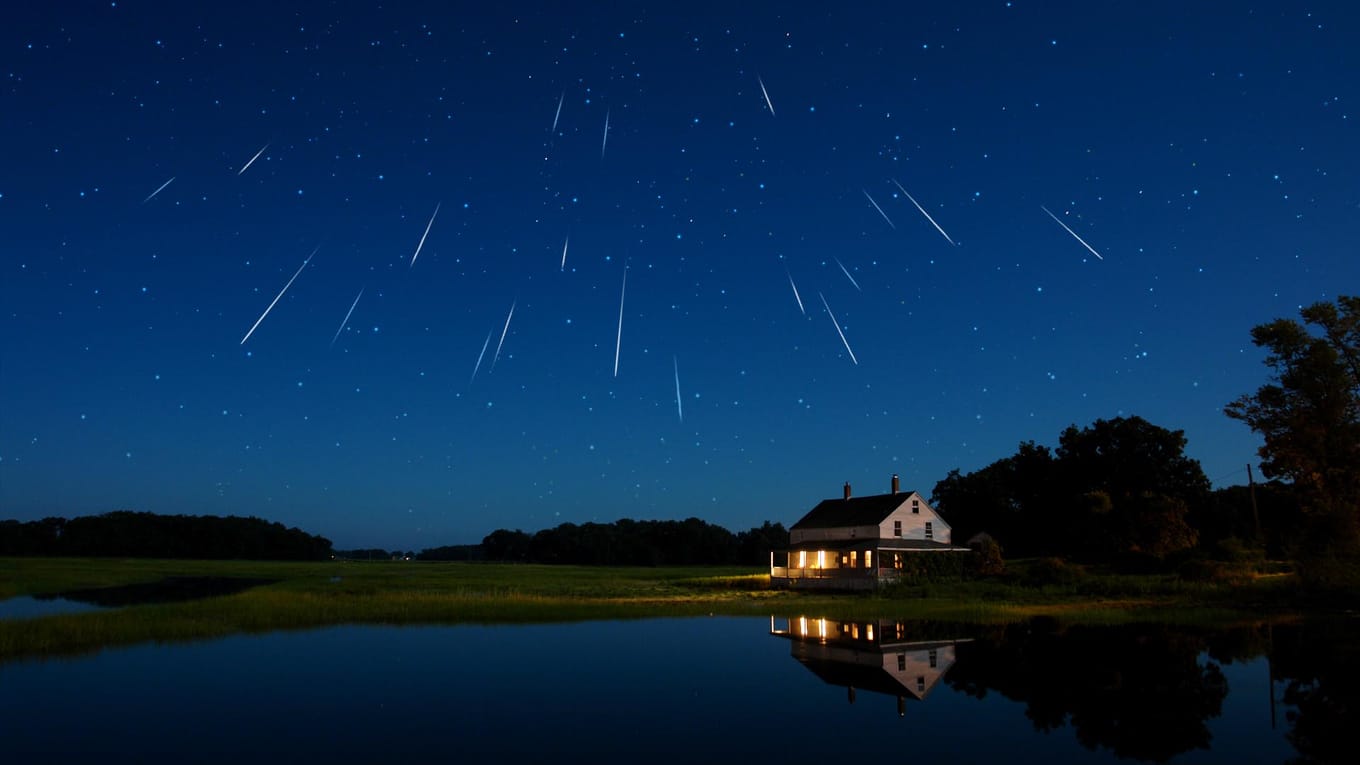If you are a sky gazer like me, be prepared for one of the best astronomical events this year. Dim all the lights, lay down on your back, and enjoy the Perseid meteor shower lighting up the dark night sky. What is extraordinary about this meteor shower is that you do not need special viewing equipment to enjoy it. The peak of the shower this year will be between 11 and 13 August, as Earth slams into the debris left by Comet Swift-Tuttle.
In addition to being a spectacular sight, this year will have an extra perk; the Moon will be in the waxing crescent phase during the peak of the Perseid, giving little illumination to compete with the meteors, offering a perfect chance for observing the shower with the naked eye. During the shower’s peak, the bright and fast moving Perseid will send up to 100 meteors per hour in perfect viewing conditions; the average viewer in ideal conditions will see 40 to 60 meteors per hour. Meteors can appear anywhere in the sky; however, getting away from city lights will help you see the dimmer meteors the same as the brighter ones.
Perseid meteors seem to radiate from the Perseus constellation, which is the 24th largest constellation. The Perseus constellation is considered larger than Cassiopeia and Orion, and is visible all year long in the Northern Hemisphere, and from mid-spring to early summer in the Southern Hemisphere. It is named after the hero Perseus as mentioned in Greek mythology, who was known for slaying the snake-haired Medusa and rescuing, then marrying princess Andromeda. They together had nine children and it is assumed that the word “Perseids” is derived from the Greek word Perseides, which refers to Perseus’ descendants. The constellation has also been known since ancient times, showing up in the records of Egyptian astronomer Ptolemy during the second century.

Source.
The shower happens when comets get close to the Sun, heat up, and pieces break off. If the debris ends up in the Earth’s path around the Sun, it can slam into our atmosphere at speeds of between 11.2654–72.4205 kms per second. The actual speed that a meteor enters our atmosphere depends on the combined speed of the Earth and the debris itself. The average speed for a Perseid meteor is 57.9364 kms per second. The air in front of the meteor is squashed and heated to thousands of degrees Celsius. The smaller meteors vaporize leaving behind a bright trail of light, while larger meteors can explode like fireballs.
For a perfect observation of the shower, find an isolated viewing spot away from the city lights, lie down on the ground, and look up in the direction of the radiant(1); your eyes may take 15-20 minutes to get used to the dark. If you plan to stay out long, make sure that you are comfortable, so bring a blanket or a comfortable chair with you because meteor watching can be a waiting game.

This NASA sky map shows where to look to spot the Perseid meteor shower of 2020, which peaks before dawn on Aug. 12, 2020. (Image credit: NASA/JPL-Caltech)
We will be pleased if you shared your observations and joined the conversation through our Facebook and Instagram pages using the hashtag #SCIplanetPerseidesChallenge
Glossary
(1) Radiant is the celestial point in the sky from which the paths of meteors appear to originate.
References
www.rmg.co.uk
unistellaroptics.com
www.timeanddate.com
www.forbes.com
Banner image: NASA/Bill Ingalls